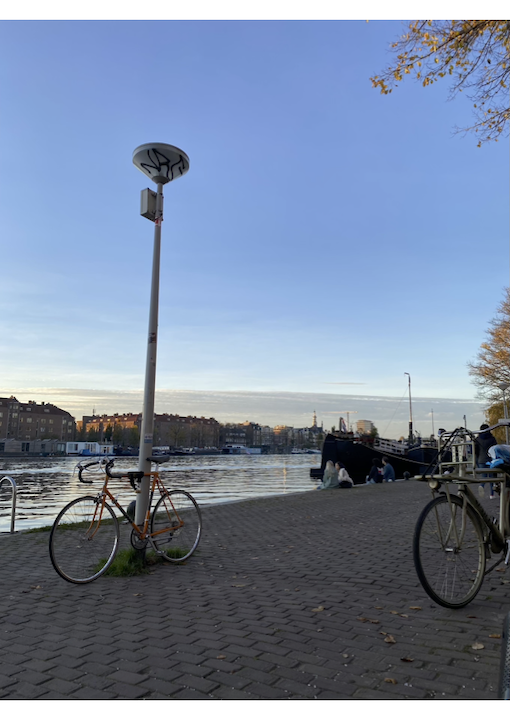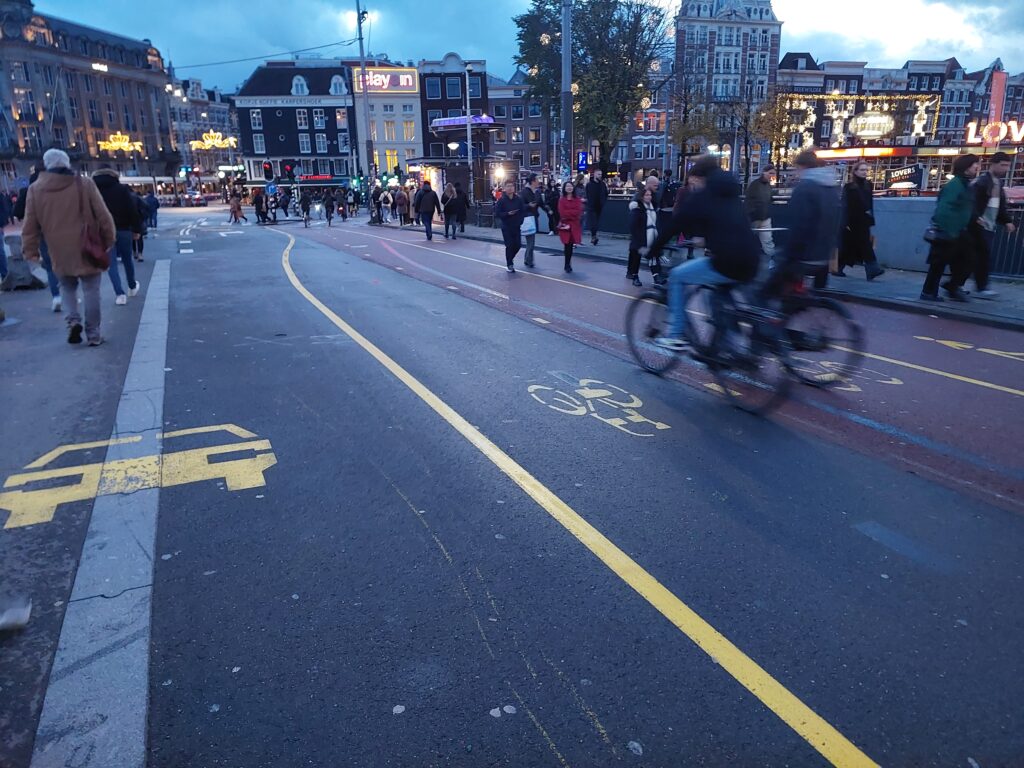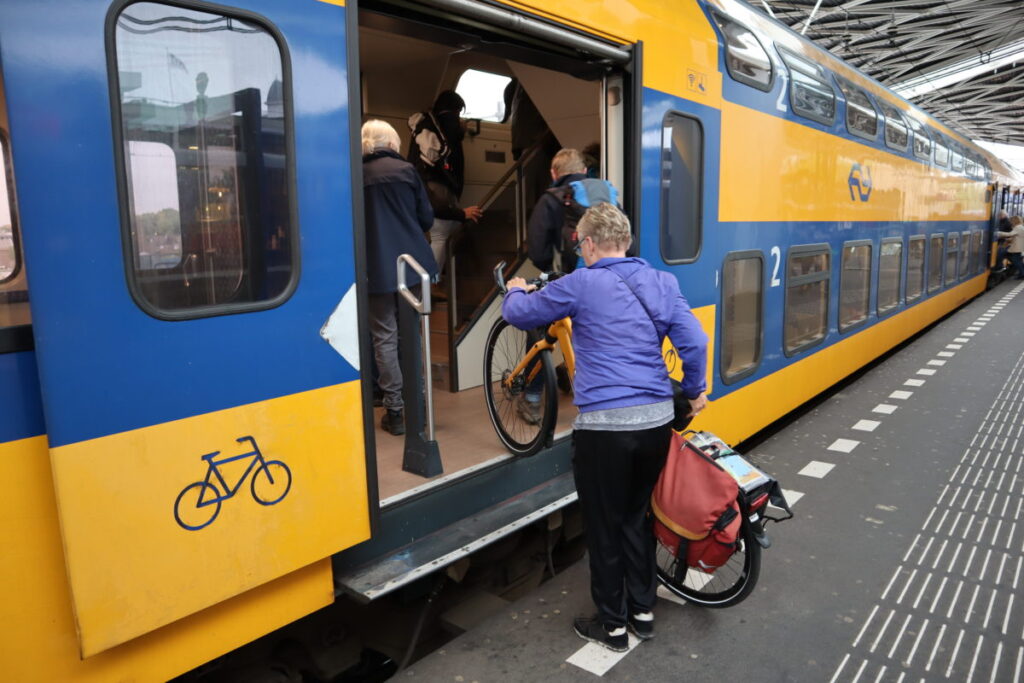Emilie Petit | LinkedIn
Selected final essay, published 31 July 2020
Emilie is Director of Strategy & Innovation at Adidas. She has a master in sociology of sports and is passionate about urban planning and sustainability.
Unraveling the Cycling City MOOC on Coursera
Perspectives from the development of sport infrastructure in France
Why did cycling become so mainstream in The Netherlands, but not in my country, France? How can France increase cycling and reduce car use in an inclusive manner?
These were the questions in my mind when I started my “Unraveling the Cycling City” journey. Having a background in the sociology of sport, I naturally thought of the many lessons from the development of sport infrastructure in France and couldn’t help asking myself, “What if cycling had benefited from the same massive political push as other activities did in the 60s?”
There is no need to live with regrets. The current Covid-19 crisis is creating a massive opportunity to develop new bicycle-friendly attitudes. There is a great sense of hope and expectation that this mode of transportation can bring both short term answers to current social distancing recommendations as well as long term positive effects to our society and cities.

Bicycle paths are not a technical thing, but are deeply rooted in culture, in politics, and in power
Te Brömmelstroet
Cycling is not in the genes. It is the result of political choices. In The Netherlands, the country with the highest share of cycling in the world (27% of traffic), bicycles were not always mainstream. “Environmental awareness, a new understanding that car-governed cities caused more problems than they solved, the 1974 and 1976 energy crises, and the 1980s economic recession forced policymakers to develop bicycle-friendly attitudes
Te Brömmelstroet
Without bottom-up pressure, bold political choices and a long-term planning vision adopted by the Dutch Government, cycling would never have become such a thing today in The Netherlands. Radical policy choices are therefore a key aspect when it comes to successfully transforming a society.
In France, this approach was taken by De Gaulle after World War II. Called “Commissariat au plan,” the aim was to modernize and reconstruct the French industrial base, given scarce resources, in the context of a closed economy with very considerable state intervention (Timoney). Industry, transport, tourism, health and education got a lot of focus through the successive implementations of “Loi-programme,” a combination of legal measures and master planning undertaken by the central government.
Parliament enacted a ‘Loi-Programme’ in 1961 that “allocated over 300 million dollars to the construction of sports installation over the next four years…This program has been a success and has resulted in the construction of 1,200 stadiums and playing-fields, 600 swimming pools, 600 gymnasiums and sport-halls, 600 youth centers (Education in France).”
Cycling didn’t figure as one of the key pillars and was merely treated as a side topic within each of these plans. This perhaps explains why “the share of cycling in public transport is just 3 percent in France (de Clercq).”

Radical cycling policy choices shouldn’t lead to new forms of social exclusion.
The fundamental dilemma in attempts to make urban development less dependent upon mobility by car is the inability of alternatives to match the quality of accessibility provided by private motorized transport.
Bertolini & le Clercq
When planning for cycling, “solutions that pursue the goal of increasing both sustainability and accessibility” have to be explored and socio-spatial factors such as physical environment and climate variables as well as socio-demographic factors should be taken into consideration when implementing policies (Oldenziel & de la Bruheze).
This is especially relevant in a country as large and heterogeneous as France. Therefore, this dilemma should be put at the heart of the decision-making process. Significantly reducing car traffic by building cycling infrastructure could lead to a decrease of accessibility for some groups of the population and consequently lead to new forms of social exclusions.
This is actually what happened with all sports facilities built in the 60s (Vigneau). All were designed in a very standardized and mono-functional way. They ended-up being only used by a very restricted group of citizens: adolescents and young adults doing competitive sports, most of whom were men. Changes had to be made over time in order to make this public infrastructure more inclusive and accessible.
In both domains, Sport and Mobility, the ability of infrastructure to promote social cohesion or, to the contrary, accentuate social exclusion is key when it comes to planning and designing. Reducing car traffic by implementing dedicated cycling lanes may be an obvious first step in dense cities, but it will not bring any positive social changes if not combined with effective infrastructure for longer-distance bike commuting connecting our cities with our suburbs and rural areas. Effective bike-transit networks, ample bicycle parking and dedicated bicycle highways will be crucial in the attempt of making cycling a positive vehicle of transformation for our society.

Sources:
- Bertolini, L., & le Clercq, F., Urban Development Without More Mobility by Car? Lessons from Amsterdam, a Multimodal Urban Region (University of Amsterdam, Volume: 35 issue: 4, 2003), pp: 575-589.
- de Clercq, G. France Has a Plan to Triple the Share of Journeys Made by Bike (World Economic Forum, 2018).
- Education in France (Cultural Services of the French Embassy, n24, April 1964).
- Oldenziel, R., & de la Bruheze, A.A., Contested Spaces: Bicycle Lanes in Urban Europe, 1900-1995 (Transfers, 1(2), 2011), pp.29-49.
- te Brömmelstroet, M., Course Discussion (Unraveling the Cycling City, 2019), video.
- Timoney, N., Economic Planning in France (Journal of the Statistical and Social Inquiry Society of Ireland. Vol XXV Part 1, 1984).
- Vigneau, F., Les équipements sportifs : enjeux et impensés d’une politique publique (Informations sociales 2015/1 (n° 187)), pp. 38-45.
All photos by the author.



